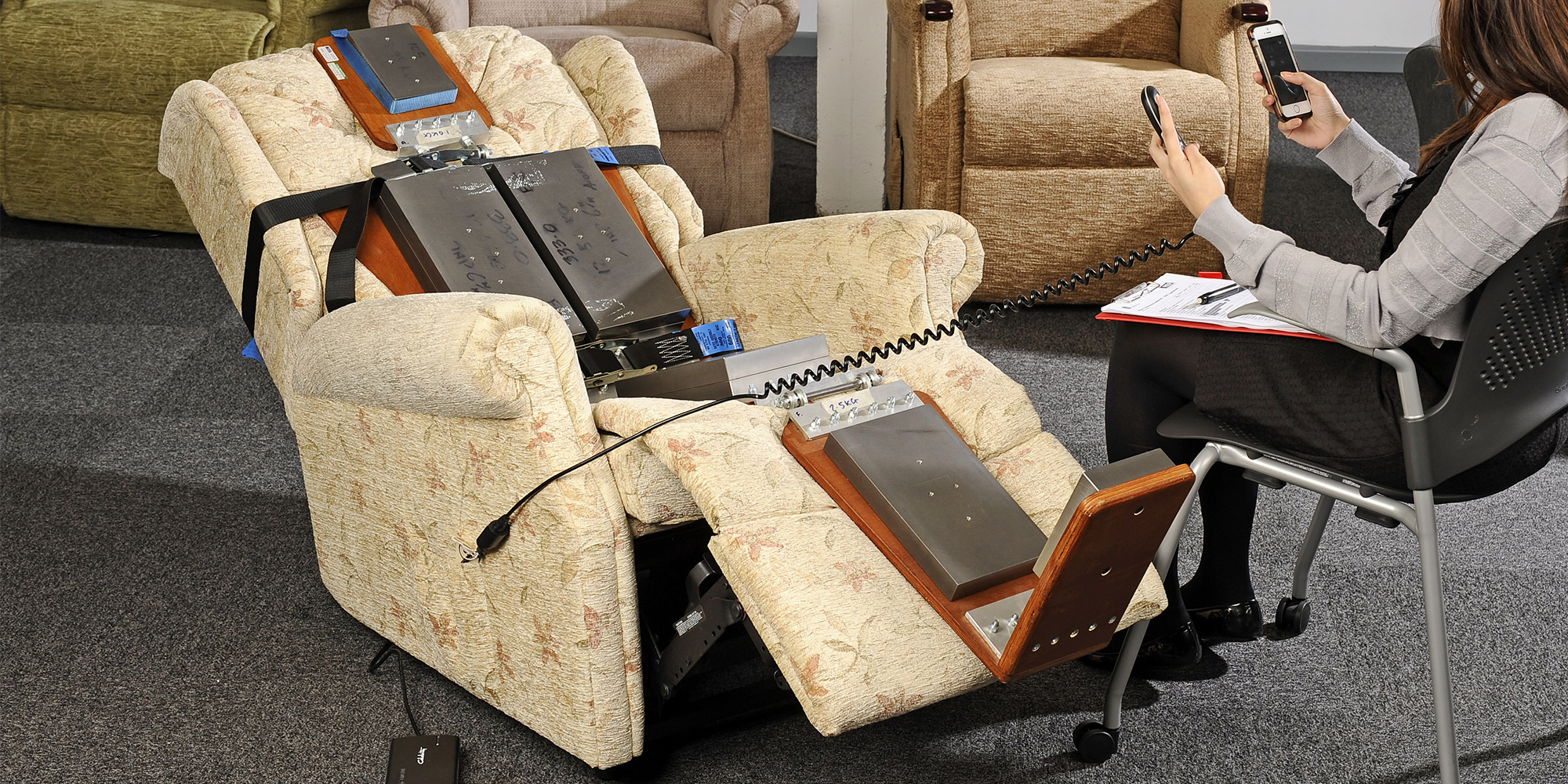CSA BIFMA X5 Reclining and Adjustable Seating Performance Testing
The CSA BIFMA X5 standard is specifically designed to evaluate the performance of recliners and adjustable seating furniture. This stringent testing protocol assesses a range of critical factors, including structural integrity, durability, adjustability, and user comfort. Compliance with this standard ensures that manufacturers meet rigorous quality benchmarks and provide safe and reliable products.
The process begins with thorough specimen preparation, ensuring the chair or sofa is in its optimal condition for testing. This includes checking all mechanical components such as motors, sensors, and actuators to ensure they are functioning correctly before initiating stress tests. The test protocol involves a series of maneuvers that simulate real-world scenarios such as reclining, adjusting backrests, and footrests under various loading conditions.
The instrumentation used in this testing is state-of-the-art, capable of measuring precise forces and movements with high accuracy. This includes load cells to measure static and dynamic loads, sensors for detecting angular displacement, and data acquisition systems that record all relevant parameters during the test cycles. The acceptance criteria are based on international standards such as ISO 9240-1:2016 and ASTM F3587, which define specific limits for acceptable performance.
One of the key aspects of this testing is the evaluation of adjustability features. This includes assessing the precision and reliability of motorized controls in adjusting different seating positions safely and efficiently. The test involves simulating a range of movements to ensure that all parts operate smoothly without any signs of wear or failure. Additionally, the durability tests are designed to mimic typical use conditions over extended periods to assess long-term performance.
User comfort is also a critical factor in this testing process. This includes evaluating seat depth, lumbar support, and overall ergonomics. The testers ensure that the furniture provides adequate support for various body types and positions, reducing the risk of discomfort or injury during prolonged use. Comfort metrics are often measured using subjective scales alongside objective data from motion capture systems.
The testing protocol also encompasses environmental considerations, ensuring the products can withstand a range of conditions from extreme heat to cold temperatures without losing functionality. This comprehensive approach ensures that the furniture not only meets safety and performance standards but also provides a positive user experience.
| Test Type | Description | Acceptance Criteria |
|---|---|---|
| Loading Capacity Test | Determines the maximum load capacity of the chair or sofa under various conditions. | Loads should be within 10% margin of the stated weight limit without structural deformation. |
| Adjustability Precision Test | Evaluates the accuracy and reliability of motorized controls in adjusting seating positions. | All positions must align with manufacturer specifications to ±5 degrees tolerance. |
| User Comfort Test | Assesses ergonomic design elements like lumbar support and seat depth for optimal comfort. | Subjective scores should meet or exceed the industry average of 8.5/10. |
The results from these tests are meticulously documented, providing detailed reports that can guide continuous improvement in product design. This ensures that manufacturers stay ahead of regulatory requirements and customer expectations, enhancing brand reputation and market competitiveness.
Applied Standards
The CSA BIFMA X5 standard is harmonized with a variety of international standards to ensure comprehensive evaluation criteria. Key among these are ISO 9240-1:2016, which sets guidelines for lumbar support in seating furniture, and ASTM F3587, which provides specifications for adjustable seating mechanisms.
These standards provide a robust framework for testing that includes not only the mechanical aspects but also the ergonomic considerations of recliners and adjustable seating. The integration of these standards ensures that the testing process is both thorough and industry-recognized, providing assurance to manufacturers and consumers alike.
Customer Impact and Satisfaction
The implementation of CSA BIFMA X5 testing has a direct positive impact on customer satisfaction by ensuring that products meet high safety and performance standards. This not only enhances the reputation of the manufacturer but also builds trust among consumers who can rely on these products for long-term durability and comfort.
Compliance with this standard also facilitates easier market entry into regions that mandate adherence to such protocols, thereby broadening the customer base. For manufacturers, meeting these standards translates into higher-quality products that are less prone to recalls or warranty claims, reducing operational costs in the long run.
Use Cases and Application Examples
- Hospitality Industry: Ensuring that hotel lobbies and lounge areas have furniture that meets ergonomic standards for extended use by guests.
- Home Office Furniture: Providing adjustable seating solutions that cater to the specific needs of office workers, promoting better posture and reducing strain.
- Public Spaces: Installing durable recliners in waiting rooms or reception areas to enhance customer comfort and satisfaction.
The following table showcases how this testing is applied across different scenarios:
| Application Scenario | Main Testing Focus | Expected Outcome |
|---|---|---|
| Hospital Furniture | Focus on durability and hygiene standards. | Increased longevity of the furniture, reducing replacement costs. |
| Cafeteria Seating | Evaluating load capacity and adjustability for comfort. | User satisfaction through ergonomic design. |
| Gym Equipment | Mechanical strength and safety checks. | Enhanced safety and reliability of fitness equipment. |
These real-world applications highlight the versatility of CSA BIFMA X5 testing in various sectors, ensuring that furniture not only meets regulatory requirements but also enhances user experience across diverse environments.





